Lifters needlessly leave more pounds on the platform due to poor choices in footwear than any other easily correctable variable. Each and every lift has a different set of requirements for what constitutes optimal footwear. The best squat shoes, bench shoes, and deadlift shoes are different for every lift.
For the quicker but less informative version of this article, watch this video:
Squat Shoes
It seems that almost no one gets squat shoes right.
In my opinion, there are three universal requirements for the optimal powerlifting squat shoe:
a) The sole is made of non-compressible material
b) The shoe has a metatarsal strap
c) The shoe reinforces the arch and supports the foot
The sole needs to be made of non-compressible material such as wood or plastic and NOT RUBBER. If it isn’t, the shoe WILL compress under a heavy load which decreases force transfer. Think about how important tightness is to technique. Why would you want soft shoes if you’re interested in maximal force transfer?
The metatarsal strap is also highly valuable. Not only does the strap increase the overall stability of the foot, but it sucks the foot into the shoe preventing any internal movement inside the shoe itself. Again, any looseness, any lack of tightness, will decrease force transfer. Yes, even at your feet! The metatarsal strap also serves, to some degree, to prevent pronation or supination of the foot under loads. This can also increase efficiency.
Ideally, the shoe will also reinforce the arch and support the foot. Squatting barefoot isn’t without its proponents, but, for most, this is going to be really hard on the arches over time. If your shoes are uncomfortable or hurt your feet, this obviously isn’t ideal. The last thing you need when trying to squat a new max is a distraction in the form of your shoes.
Olympic Weightlifting Shoes
Olympic weightlifting shoes are just about the only shoes which fit the bill. You do need to be careful because, with the rising popularity of CrossFit and the mixed demands of that sport, many of these shoes are now made with rubber-hybrid materials like EVA that do compress under powerlifting heavy loads (~600-700lbs+).
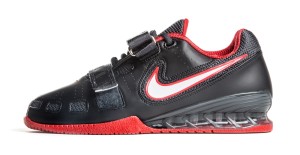
The Nike Romaleos are generally considered the best of the best when it comes to Oly shoes.
Olympic weightlifting shoes can be useful for a variety of purposes. If you lack sufficient ankle dorsiflexion, the added heel height will decrease the mobility requirements of the movement making it easier to reach depth and maintain good posture. The slight change in center of gravity also encourages more forward knee travel which increases quad involvement in the movement.
As far as heel height is concerned, you’re going to want to go with a heel that is appropriate for your level of “mobility”, your anthropometry, and your height. The longer your legs are, the more your knees will need to track forward to keep your back relatively upright in the squat. The stiffer your ankles are, the more “lift” you will need from the heel to compensate. The taller you are, the bigger the heel needs to be relative to your size as a human being.
For guys over 6’ who also have long femurs and/or poor mobility, I would consider playing around with shoes that have 1.25” heels such as the VS Athletics if the standard 0.75” doesn’t work for you.
In my opinion, the best place to buy Oly shoes is MaxBarbell. MaxBarbell makes far more affordable products than the high end Adidas/Nike types. If you don’t want to drop $150-200 on a pair of brand name Oly shoes, go to MaxBarbell and you’ll find options for well under $100.
Weightlifting Shoe Drawbacks
Now, while I think Olympic weightlifting shoes with a moderate heel, non-compressible sole, and a metatarsal strap are optimal for most powerlifters, I do not personally like a heel when I use a wide stance squat. One of the primary motivations for taking a wide stance squat is decreasing range of motion. When the knees come forward, range of motion increases because knee height drops as the knee travels forward; when knee height drops, the hips must go even lower to fall below the knee.
Some guys like Dan Green are highly successful using Olympic weightlifting shoes with wide stance squats. For me, it feels awkward trying to turn a relatively hip dominant movement, as the wide stance squat is, into a more quad dominant type of movement which is what Oly shoes tend to do. If you have big strong quads, you’ll probably prefer Oly shoes regardless of your stance.
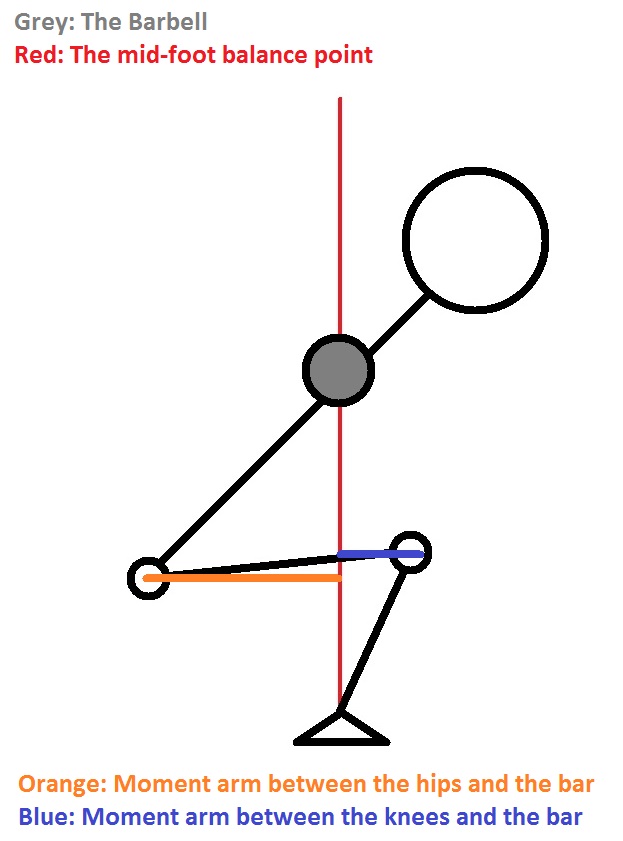
When the knees come forward, it increases leverage at the knee joint and decreases leverage at the hip joint by elongating and shortening each respective moment arm. For more on the physics, see the powerlifting technique series.
Flat Shoes for Wide Stance Squatters
So, for those of us out there who desire all of the good things about the Olympic weightlifting shoes, but want a FLAT heel instead, what are the options? Well, they aren’t that great to be honest.
Apparently, Metal makes a shoe with a metatarsal strap and a flat heel, but it is extremely thin. I’ve never personally tried the Metal squat shoe so I’m going to have to reserve judgment. They cost over $100 before shipping and they’re a European item. From what I’ve heard, the wait to get the shoes is often ~6 weeks. That said, some people really like them a lot.
The second far cheaper option is to get a pair of ASICS wrestling shoes. Most of them don’t have metatarsal straps, but they are flat and thin enough to be non-compressible. Just be careful to get a model that is thin because wrestling shoes tend to use rubber in the soles. The flex is important for athletes.
The final and perhaps most expensive option is to take a pair of Olympic weightlifting shoes to a cobbler and have them remove the heel. If you opt for this route, you can actually keep the reinforced heel cup, metatarsal strap, and other good qualities of the Olympic weightlifting shoe. This is what Mike Tuchscherer of Reactive Training Systems did. It is honestly the best option in my opinion.
I personally use the SABO deadlift shoes to squat. They’re basically analogous to the second option. They’re only 2-5mm thick, they have a great grippy bottom, a metatarsal strap and plenty of draw string loops to help make sure you can get the shoe ridiculously tight – as it should be. I’ll talk more about the SABOs when we get to deadlift shoes.
As a wide stance squatter, whatever you decide, make sure that your shoes have a metatarsal strap, a thin/non-existent or non-compressible sole, and if they don’t at least give arch support, make sure the side of the shoe is reinforced so that you can push out against it (some people call this cue “spreading the floor”). You really don’t want your foot rolling through the side of your shoe under a heavy load.
Are Chucks Good for Powerlifting?
Chuck Taylors, despite their popularity, are, in my opinion, garbage for powerlifting purposes.
They are flat with a relatively thin sole and that is about the only advantages they possess over running shoes. Though the sole is only 0.5”, it is made of rubber. Rubber compresses under a load. The shoe doesn’t have a metatarsal strap either.
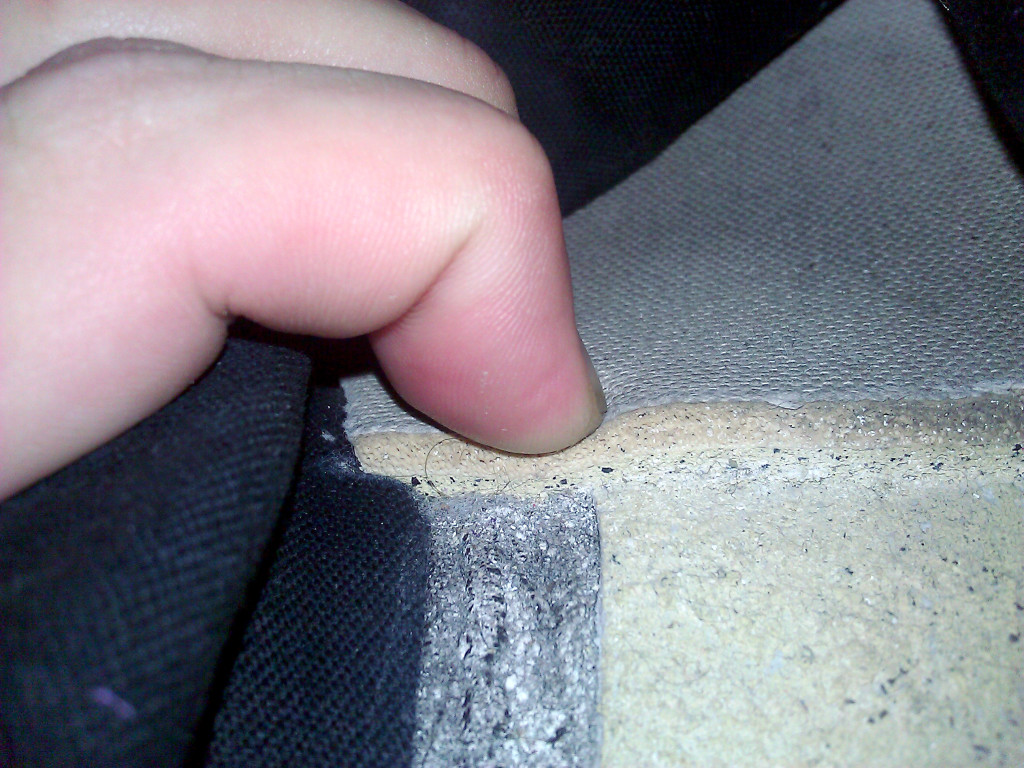
If I can compress the rubber material in this shoe with my bare hands, what do you think is happening with 405 on your back?
Chucks are cheap, yes, but they’re also sub-optimal. If you just can’t afford multiple pairs of shoes or even one expensive pair, I’d honestly try to get a pair of wrestling shoes off eBay well before I ever got a pair of Chucks. At least that way you won’t have a compressible sole and you might get lucky and find one with a metatarsal strap.
Bench Shoes
Unlike the squat, bench shoes are a pretty simple affair. There are only two scenarios that we really care about:
1) Does your federation allow heels to be off the ground?
2) Do you prefer to bench with the maximum arch possible?
If the answer to Question 1 is “yes” then it doesn’t matter what you bench in. Just get something with a flexible forefoot so that the shoe allows you to effectively get up onto your toes when you bench.
However, if the answer to Question 1 is “no”, we need to go to the second question to determine what shoes might be optimal for you. Do you bench with a maximal arch? If not, again, it doesn’t matter. If you lift in a federation with a flat-foot rule (check the federation comparison chart), get a shoe with good grip. The rest is irrelevant.
Now, if you lift in a federation with a flat foot rule BUT you also like to use a huge arch for bench, I do have one optimization for you: bench in Oly shoes. The increased heel height will allow you to get your feet further back without having your feet off the ground.
In fact, because I plan to compete in the IPF, I have a pair of shoes specifically for benching that have been modified to a ~2”/5cm heel height which is the maximum allowable by IPF rules.
This allows me to get my feet back almost as far as I would even if the flat foot rule didn’t exist. I know that may sound ridiculous, but the accumulation of many little advantages such as this one really add up over time.
Deadlift Shoes
The primary consideration when choosing a deadlift shoe is heel height. Just ask yourself a simple question: do you pull more from a 1” deficit or from the floor? Obviously, we all pull more from the floor. So why in the hell would you want to wear basketball shoes and turn all of your pulls into deficit deadlifts? Even Chuck Taylors add 0.5” of height!
For conventional deadlifters, I just recommend deadlift slippers. They’re essentially nothing more than socks with a rubber grip pattern on the bottom. They’re 1/16”-1/8” of an inch tall. If you switch to slippers from Chucks, you’ll save yourself 0.3-0.4” off the pull. How much does that matter? I don’t know. Even if it was just 5lbs, isn’t that worth something as simple as putting a pair of socks on?
For sumo pullers, things are a bit more complicated. The grip of the shoe becomes more important. Though many sumo pullers use slippers, I personally don’t think they’re optimal. First of all, they don’t offer any side support so you can’t spread the floor and keep your knees out quite as well. Secondly, my foot shifts around in the deadlift slipper which decreases tightness.
So what’s the answer? Well, for me, it was the SABO Deadlift shoe. Not only are these bad boys made directly in Mother Russia, which probably adds 20lbs to your strength right there, but they basically have the absolute perfect specifications for a deadlift shoe. They’re only 2-5mm tall so the heel height is very comparable to a deadlift slipper. They’re maybe 1/16” taller. They also have a metatarsal strap and reinforced side support. There is a million draw string holes which means I can put these suckers on so tight that my foot doesn’t move at all.
I was able to increase all of my work sets by 10lbs on the sumo deadlift the very first time I switched to these shoes from slippers. The added stability and tightness of the shoe made that big of a difference. Is 10lbs worth it? Hell yes. To me, there’s no question it is worth it. You’ll have to decide for yourself.
I love my SABO Deadlift shoes. I highly recommend them. You can grab a pair over at MaxBarbell.com.
Like this Article? Subscribe to our Newsletter!
If you liked this articled, and you want instant updates whenever we put out new content, including exclusive subscriber articles and videos, sign up to our Newsletter!
Questions? Comments?
For all business and personal coaching services related inqueries, please contact me:
Table of Contents
Powerlifting Gear I: Powerlifting Wrist Wraps
Powerlifting Gear II: Powerlifting Belts
Powerlifting Gear III: Powerlifting Knee Sleeves
Powerlifting Gear IV: Powerlifting Shoes

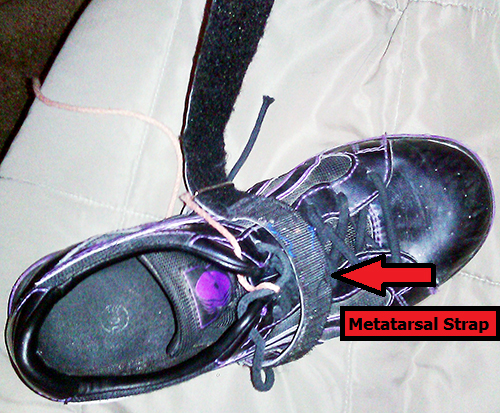


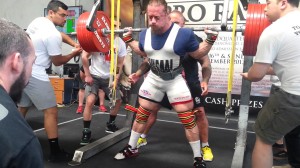

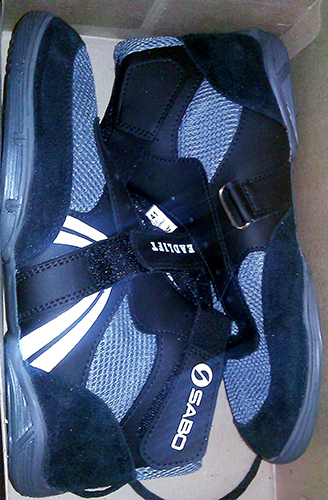
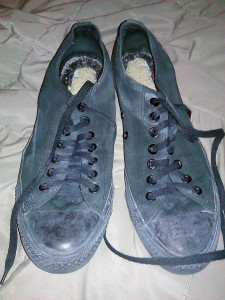
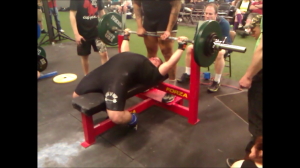
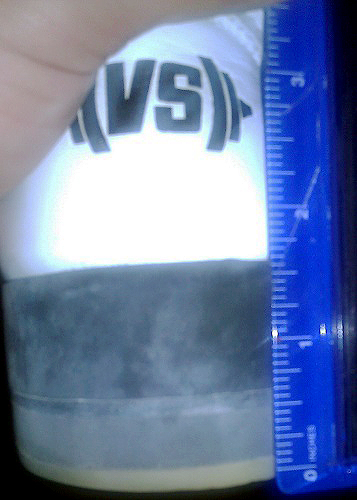
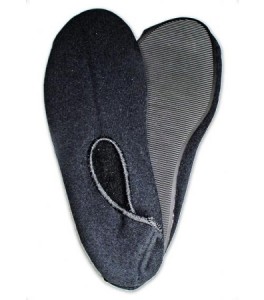
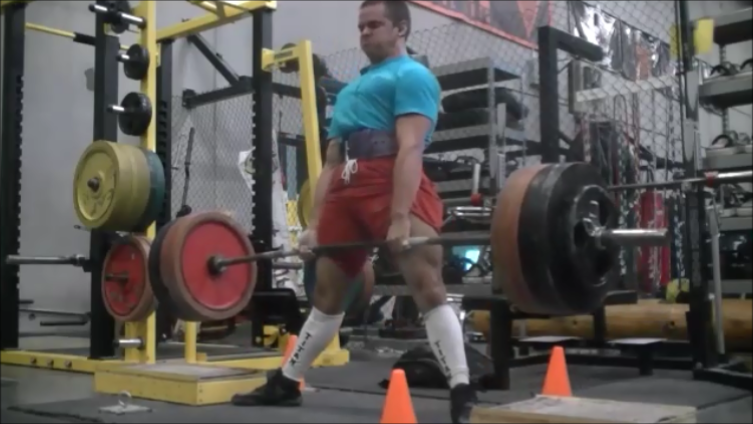
Do you have any idea where I can find these SABO DL shoes that ships to Canada?
I believe Max Barbell is the only store in North America that carries them. They’re a Russian product.
I am trying to find those VS Shoes that you are using for the Bench Press; but so far i couldn’t find them. It would be great if you could give me a hint.
I know you already found the link to the VS Athletics, but I’ll post it here just in case anyone else has the same issue: http://www.powerliftingtowin.com/vs-athletics